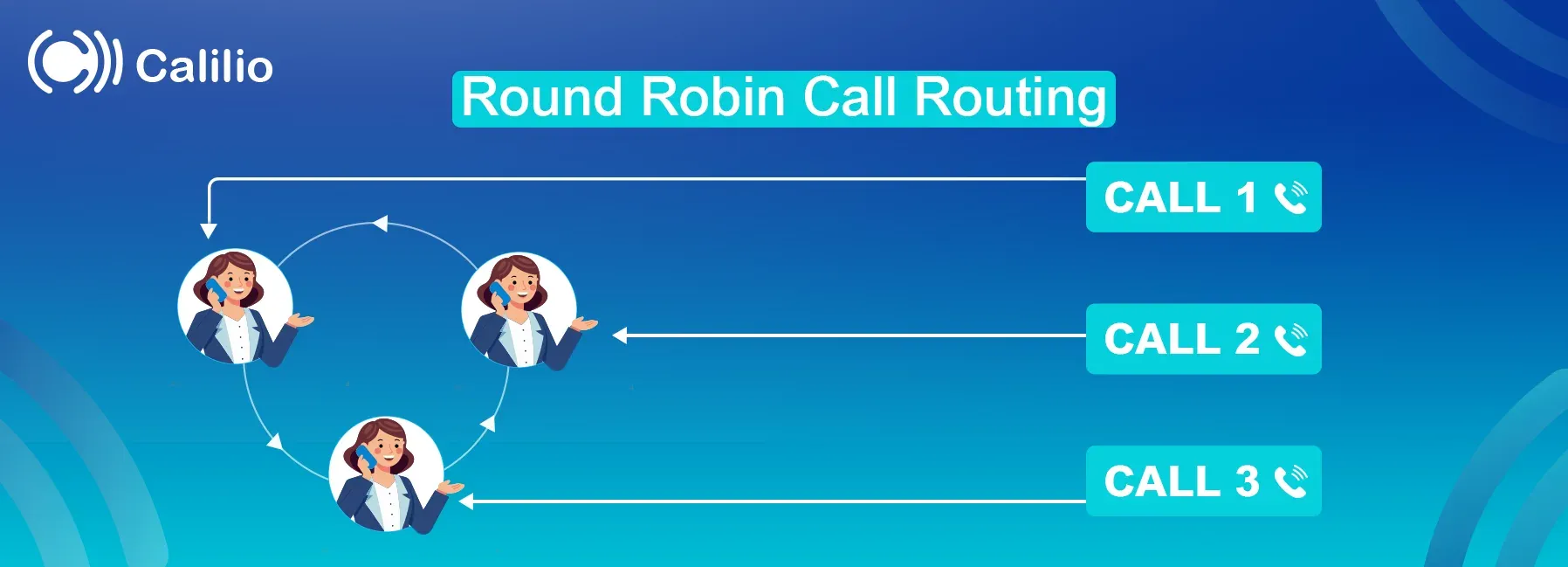What Are Ring Groups? Types and Best Practices

Assigning separate business numbers to each phone would be challenging. Additionally, if multiple customers try to call the same number, it could lead to a busy signal. It prevents callers from reaching the intended recipient, resulting in businesses losing lead-generation calls and potential conversions.
One of the simple methods to automatically distribute calls is through a ring group. It distributes incoming calls among several agents or teams. Ring group allows multiple agents to handle calls, ensuring that if one is unavailable, another can answer.
Highlights:
- Ring group allows businesses to use the same contact number for all the existing phones in an office to manage incoming calls efficiently.
- There are three types of ring groups: Sequential, Simultaneous, and Round-Robin, which can be modified to suit your business type.
- In a ring group, when a call comes in, it follows four steps: call initiation, call distribution, call answering, and fallback handling to distribute workload efficiently.
What Is a Ring Group?
Ring groups connect a single phone number to multiple phones to ring simultaneously, allowing available agents to answer the call. All phones in a ring group share the same contact number. When someone calls that number, all phones in the group ring based on the set ringing pattern, ensuring calls are answered quickly.
Moreover, businesses use Ring Groups to manage customer service, sales teams, or support desks efficiently, ensuring that no call goes unanswered.
How Does Ring Group Work?
A ring group routes incoming calls to multiple phones or extensions within a defined group. When a call is received, the system initiates a ringing strategy and distributes, ensuring workloads are balanced effectively.
- Call Initiation: First, an incoming call rings in the phone system and goes to the assigned ring group.
- Call Distribution: The system rings numerous phones at the same time or in a certain order, depending on the ringing strategy that is configured.
- Call Answering: The call is handled by the first available agent who picks up.
- Fallback Handling: If the call is not answered, the call can be forwarded to voicemail or another group.
Benefits of Ring Group
Ring group helps distribute workloads efficiently, improving response time and customer experience.
- Improved Call Distribution: To ensure calls are answered promptly by the correct team, incoming calls are distributed to multiple members, preventing dependency on a single individual.
- Faster Response Time: By ringing multiple phones simultaneously or in sequence, ring groups make sure calls are picked up as quickly as possible. This reduces the chances of a call being missed or sent to voicemail, minimizing the time customers spend waiting.
- Enhance Customer Experience: Ring group ensures calls are answered quickly by the available agent, increasing first-call resolutions, reducing wait times, and enhancing customer experience.
- Balanced Workload: There are different ring group strategies, such as round-robin or longest-idle, to distribute calls across the team. It ensures no single agent gets burdened with calls while others stay idle.
Optimize Call Distribution with Ring Group
Enhance your call handling with faster response times, balanced workloads, and a smoother customer experience.
Types of Ring Group
There are typically three types of ring groups that can be tailored to meet a business's needs for efficient call management: Simultaneous Ring, Sequential Ring, and Round Robin Call Routing.
1. Simultaneous Ring
In simultaneous rings, all the phones within a group ring at the same time. The first agent to pick up the call takes it, ensuring the customer gets connected quickly, no matter which agent is available. This type of ring group is essential for managing a high volume of calls with faster answer times.

2. Sequential Ring
Phones ring in a predetermined order in a sequential ring. The first agent's phone rings, and if they don’t answer, the call moves to the following agent in the sequence. The cycle continues until the call is responded to, goes to voicemail, or the sequence ends without an answer.

Ring groups especially benefit smaller teams or when calls need to go in a specific order, ensuring that important calls are not missed.
3. Round Robin
In a round-robin, calls are distributed evenly among the team members in rotating order. Once one agent answers, the next call is sent to the following agent in the list, and so on. This method especially keeps the workload balanced among team members.

Conclusion
Ring groups manage incoming calls effectively by distribution methods such as sequential, simultaneous, or round-robin that fit your team's needs. It ensures that calls are answered quickly without burdening a single agent. Implementing a ring group increases productivity, balances workload, and reduces client wait times, improving the overall experience.
Calilio is a business phone system that allows efficient distribution of incoming calls among multiple users. Its call-forwarding rules and ring group options ensure calls are promptly answered. Sign up now!!
Frequently Asked Questions
What is the difference between a ring group and a call group?
A ring group rings multiple phones, either simultaneously or in sequence. A call group includes more advanced features, such as call queues, where callers wait in line until an agent is available.
What if an incoming phone call isn't answered?
If no one in the ring group answers, the call can go to voicemail, be forwarded to another group, or be dropped, depending on your settings.
Latest Posts
From the blog
The latest news, technologies, and resources from our team.





